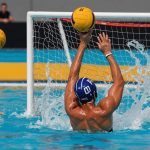Unleashing Velocity: Essential Breathing Strategies for Swimmers to Reduce Drag and Enhance Speed
Understanding the Importance of Breathing in Swimming
When it comes to swimming, breathing is often overlooked as a critical component of technique, yet it is pivotal in enhancing speed and reducing drag. For swimmers, particularly those at the competitive level, mastering breathing techniques can be the difference between a medal and a missed opportunity. Here, we delve into the world of breathing strategies that can transform your swim.
The Science Behind Breathing and Drag
Drag, or the resistance a swimmer encounters in the water, is a major obstacle to speed. One of the primary sources of drag is the swimmer’s body position during breathing. When a swimmer lifts their head to breathe, it can disrupt the streamlined position of the body, increasing drag and slowing them down.
Have you seen this : Protecting dancers: key conditioning strategies to avert overuse injuries
“Breathing technique is crucial because it affects the entire body position in the water,” says Coach Sarah Johnson, a renowned swimming coach. “A well-executed breath keeps the body in a streamlined position, minimizing drag and maximizing speed.”
Key Breathing Strategies for Swimmers
Body Position and Alignment
Maintaining a streamlined body position is essential for reducing drag. Here are some key points to focus on:
In the same genre : Fueling victory: how sports nutrition drives athletic excellence in competitive events
- Head Position: Keep your head down and aligned with your spine. This reduces the amount of drag created by lifting your head to breathe.
- Shoulder Roll: Roll your shoulders forward as you breathe to maintain a smooth, continuous motion.
- Hip Alignment: Ensure your hips are aligned with your body, avoiding any twisting or turning that could increase drag.
Breathing Timing and Frequency
The timing and frequency of your breaths can significantly impact your performance.
- Bilateral Breathing: Breathing on both sides (every 2-3 strokes) helps maintain a balanced body position and reduces the risk of injury by distributing the stress evenly across both shoulders.
- Breathing Rhythm: Practice breathing in sync with your stroke rhythm. For example, in freestyle, breathe every 2-3 strokes, ensuring that your breath is part of the natural flow of your swim.
Breathing Technique: Inhale and Exhale
The way you inhale and exhale is just as important as when you breathe.
- Quick Inhale: Take a quick, deep breath in through your mouth. Aim to inhale for about 0.5 seconds.
- Slow Exhale: Exhale slowly through your mouth and nose while your face is in the water. This helps maintain a stable body position and reduces bubbles, which can create additional drag.
Training Regimens to Enhance Breathing
Strength Training
Strength training is not just about building muscle; it can also enhance your athletic performance by improving your body’s ability to maintain a streamlined position.
- Core Strength: A strong core is essential for maintaining a stable body position in the water. Incorporate exercises like planks, Russian twists, and leg raises into your strength training regimen.
- Shoulder Strength: Strong shoulders are crucial for efficient breathing. Include exercises like shoulder presses, lateral raises, and front raises in your routine.
Specific Swimming Drills
Here are some specific drills to help you optimize your breathing technique:
- Kicking Drills: Kick with a kickboard while focusing on your breathing technique. This helps you practice breathing without the distraction of arm movements.
- Fist Drills: Swim with your fists closed to focus on your arm technique and breathing rhythm.
- Breathing Intervals: Swim intervals where you breathe every 2-3 strokes, then switch to breathing every 4-5 strokes. This helps you develop flexibility in your breathing pattern.
Table: Comparing Different Breathing Techniques
| Breathing Technique | Benefits | Drawbacks |
|---|---|---|
| Bilateral Breathing | Reduces risk of injury, maintains balanced body position | Can be challenging to master, especially for beginners |
| Unilateral Breathing | Easier to learn, allows for faster breathing | Increases risk of injury, can lead to imbalanced body position |
| Quick Inhale, Slow Exhale | Reduces drag, maintains stable body position | Requires practice to execute smoothly |
| Breathing Every 2 Strokes | Enhances speed, improves swimming efficiency | May not be suitable for all stroke types |
Practical Insights and Actionable Advice
Heart Rate and Energy Management
Managing your heart rate and energy levels is crucial during swimming.
- Heart Rate Monitoring: Use a heart rate monitor to track your heart rate during training. This helps you understand how different breathing techniques affect your heart rate.
- Energy Transfer: Understand the concept of energy transfer between potential energy (stored energy) and kinetic energy (energy in motion). Efficient breathing helps in smooth energy transfer, enhancing your overall performance.
Long-Term Benefits and Injury Prevention
Consistent practice of proper breathing techniques can have long-term benefits and help prevent injuries.
- Reduced Risk of Injury: Proper breathing techniques reduce the risk of shoulder and neck injuries by distributing the stress evenly.
- Enhanced Athletic Performance: Over time, mastering breathing techniques can significantly enhance your athletic performance, allowing you to swim faster and more efficiently.
Quotes from Experts and Athletes
- “Breathing is not just about taking air in; it’s about maintaining a streamlined position and reducing drag. It’s a critical component of swimming technique,” says Olympic swimmer, Michael Phelps.
- “When athletes optimize their breathing, they can enhance their performance significantly. It’s about finding that perfect rhythm and maintaining it throughout the swim,” notes Coach Bob Bowman.
Breathing strategies are a cornerstone of swimming technique, and mastering them can significantly enhance your speed and reduce drag. By focusing on body position, breathing timing, and specific training regimens, swimmers can optimize their performance and achieve their full potential.
In the words of Coach Sarah Johnson, “Breathing is the unsung hero of swimming. When done correctly, it can transform your swim from good to great.”
Whether you’re a beginner or an elite athlete, incorporating these breathing strategies into your training will undoubtedly enhance your swimming experience and performance. So, the next time you dive into the water, remember that every breath counts.











